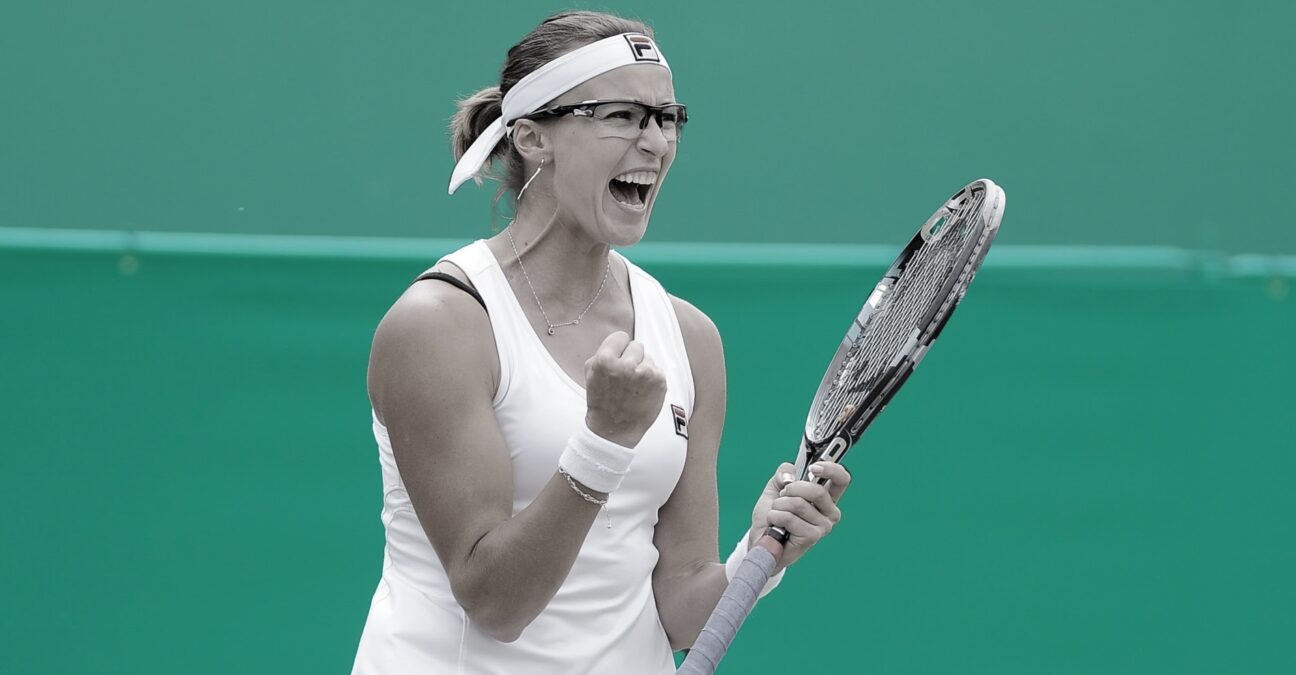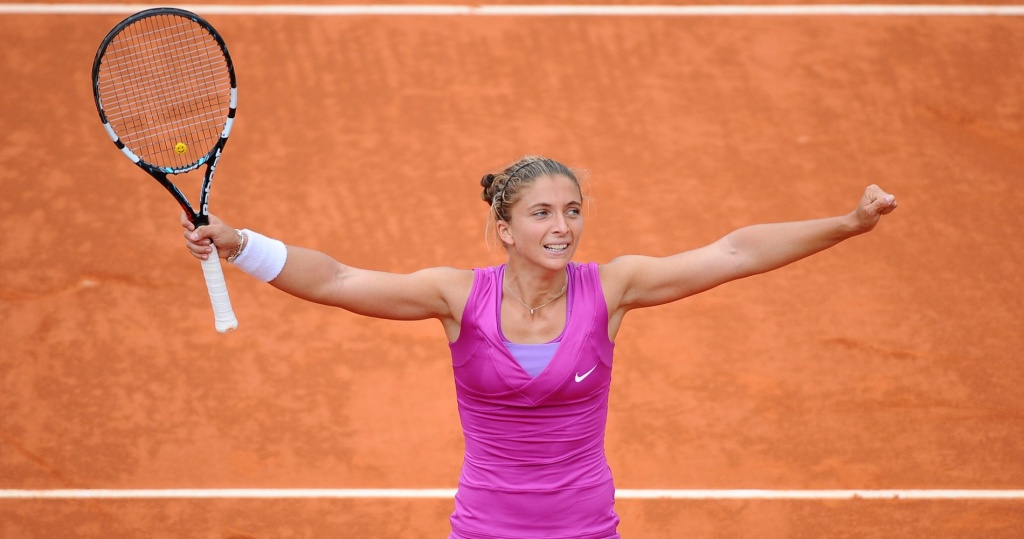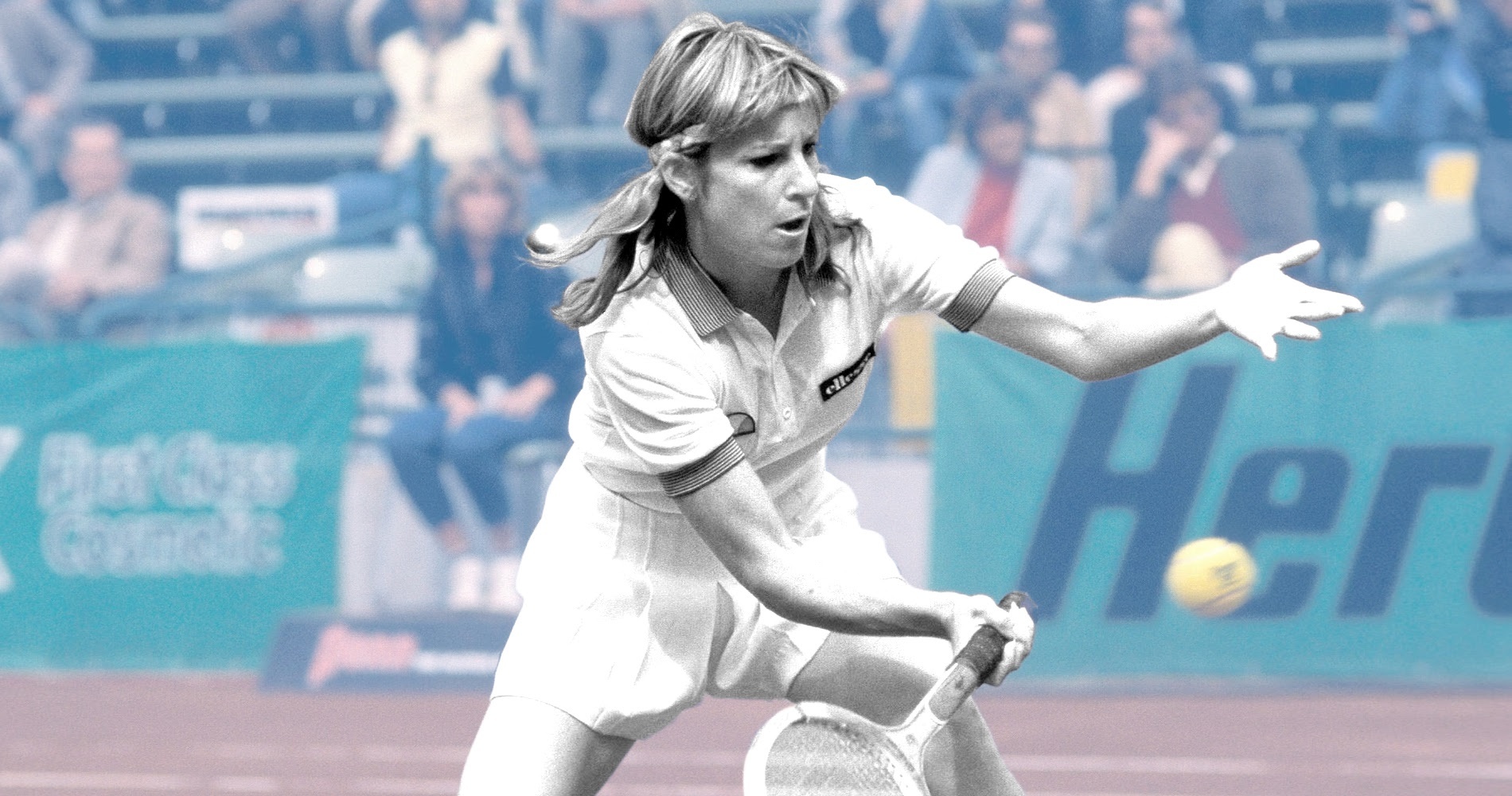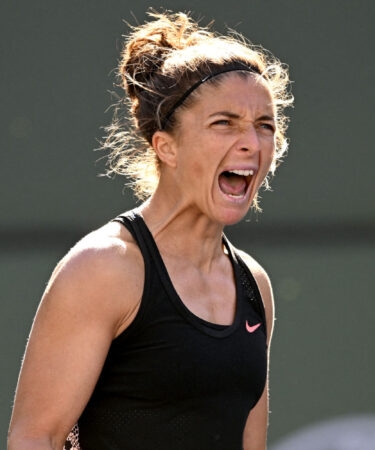June 30, 2012: The day Shvedova recorded the first “Golden Set” in women’s tennis history
Every day, Tennis Majors takes you back in time to relive a tennis event which happened on this specific day. On this day in 2012, Yaroslava Shvedova became the first woman in professional tennis to win a set without losing a single point
 Yaroslava Shvedova, On This Day 06/30
Yaroslava Shvedova, On This Day 06/30
What happened exactly on that day?
On this day, June 30, in 2012, in the third round of Wimbledon, Yaroslava Shvedova blanked Sara Errani, winning the first set 6-0 without losing a single point. This feat, called a “golden set”, had never been achieved in women’s tennis before, and had been achieved only once before in tennis history. That was in 1983 by the American player Bill Scanlon. After this lightning first set, Shvedova won the second set 6-4 to win the match.
The players: Yaroslava Shvedova and Sara Errani
- Yaroslava Shvedova, the relative unknown from Kazakhstan
Yaroslava Shvedova was born in Russia in 1987, before choosing to play for Kazakhstan in 2008. She claimed her first title on the WTA tour in 2007 in Bangalore, although she was ranked only No 147 in the world. The title propelled her into the top 100. Relying on a big serve and powerful groundstrokes, she played a high-risk game that could prove dangerous to any opponent, including herself on her bad days. Shvedova’s most remarkable results since her only singles title were two Grand Slam quarter-finals, reached at Roland-Garros in 2010 (defeated by Jelena Jankovic, 7-5, 6-4) and 2012 (defeated by Petra Kvitova, 3-6, 6-2, 6-4). At the start of Wimbledon in 2012, she was ranked No 65 in the world.
- Sara Errani, the Italian who reached the 2012 Roland-Garros final
Sara Errani, from Italy, was also born in 1987. Her game relied on dynamic footwork, great fighting spirit and a consistent topspin forehand. She was also known for her serve, which was unusually weak at the elite level. Errani entered the top 100 in 2007 and established herself around the top 40 for several years, claiming two titles in 2008, in Palermo and Portoroz. Her career took off in 2012; and in the first six months of the season, she had already claimed three tournaments (Acapulco, Barcelona, Budapest), reached the quarter-finals at the Australian Open and, above all, she reached the final at Roland-Garros, finishing runner-up to Maria Sharapova (6-3, 6-2). Thanks to these outstanding results, she entered Wimbledon as the world No 10. At the French Open, Errani had also claimed a first Grand Slam doubles title, partnering Roberta Vinci.

The place: Wimbledon
Wimbledon is the oldest and the most prestigious tennis tournament in the world. Held by the All England Lawn Tennis and Croquet Club since 1877, it moved to its current location in 1922, the same year that the Centre Court was built. Considered by many as the most intimidating court in the world, with its famous Rudyard Kipling quote above the entrance (“If you can meet with triumph and disaster and treat those two impostors just the same”), the Centre Court had seen the best players in the history of the sport competing for the title.

After the US Open switched to clay and then hard court in the 1970s, and after the Australian Open switched to hard court in 1988, Wimbledon remained the only Grand Slam tournament to be played on grass, a surface that is usually more suitable for serve-and-volley players. Not only did Wimbledon keep its surface, but it also maintained old-fashioned traditions such as its all-white dress code.
The facts: Shvedova realised what she had accomplished only after the match
Before their third-round encounter at the All England Club, both Errani and Shvedova were in great form: at Roland-Garros, the Italian had just reached her first and only Grand Slam final, while the Kazakh had equaled her best performance by reaching the quarter-finals. At the same time, neither of them had ever performed well at Wimbledon, the best result by either of them being a third-round effort, reached by Errani in 2010.
The two players had faced each other three times, and Errani had won their first encounter in 2009 before Shvedova prevailed twice, the last time in 2011, in Miami (6-3, 5-7, 7-6). They had both won their two first matches at Wimbledon without dropping a set.
Shvedova started the match with an ace. This was the start of a 15-minute nightmare for Errani. Hitting 14 winners and four aces, Shvedova won 24 points in a row to seal the first set 6-0. It had never happened before in women’s tennis, and, actually, the previous record of the most consecutive points won was already held by the Kazakh. In 2006, she had won the 23 first points of her match against America’s Amy Frazier, before eventually losing, 1-6, 6-0, 6-0.
This time, there was no twist : although Errani fought back in the second set, Shvedova won in straight sets, 6-0, 6-4. Later, she reflected on the match:
“I had no idea. I was just playing every point and every game. I didn’t feel like every game was 40-love, only in the second set. I remember first or second ball of the second set she won. All the people started to clap and scream. I was like, ‘What’s going on?’ I even smiled. I was, like, ‘OK, they want to see a good match’. Then in the gym after the match, when I was cooling down, my coach came, and he’s like, ‘Did you know someone told me the stats about you and not losing a point?’ I was like, ‘Really? Like not making unforced errors or not losing points?’ Not losing a point. So it was incredible.”
Obviously impressed by her own performance, Shvedova then tweeted, “Today, I laid a golden egg.”
What next? Shvedova loses in the next round while Errani becomes world No 1 in doubles
Shvedova would lose two days later, in the fourth round, against world No 6 and then four-time Wimbledon champion Serena Williams (6-1, 2-6, 7-5). In September 2012, she would reach her career-high ranking of world No 25. She would reach the quarter-finals of a Grand Slam a third time, at Wimbledon in 2016 (defeated by Venus Williams, 7-6, 6-2).
Errani would remain a top 10 player for two more years, mainly due to her great results at Roland-Garros, where she would reach the semi-finals in 2013 (defeated by Serena Williams, 6-0, 6-1), and the quarter-finals in 2014 and 2015. With her doubles partner Vinci, Errani would go on to claim a total of five Grand Slam crowns, and finish as world No 1 in 2013 and 2014.
Shvedova took a maternity break and returned to the tour in 2020 before formally retiring in 2021, whereas Errani, who lost in the singles qualifying at Wimbledon, is still competing on the women’s tour at the age of 36 and is currently ranked No 73 in the world.












